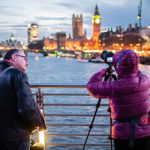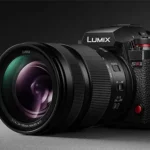
Some of the best portraits are where the subjects look completely comfortable like their not looking at a camera. When people try to smile or make a certain kind of face for the camera it usually doesn’t seem very genuine. The trick is to capture the image when the subject(s) aren’t necessarily focused on the camera. The main purpose of portrait photography is to capture the essence of the subject(s). Different people have different techniques for doing this, one of which is taking a picture while the subject is planning on smiling and then take another couple while they are recovering. Or another way would be to tell a funny joke where they can’t help but genuinely laugh and smile. But probably the best way is just to catch them off guard by waiting for the right opportunity and snapping a picture right when they look at you not expecting a camera.

You will get the best results if the subject is brighter than the background so there is not much distraction. For these you should use a wide aperture (low f/stop) to make the background out of focus and less of a distraction. Professionals usually use a fixed telephoto lens that’s 90 mm or a little higher for portraits for the reason that it de-emphasizes the subjects nose or any other unflattering feature because at that far away the nose or any other significant feature doesn’t seem closer to the camera than the rest of the face.

Environmental portraiture are portraits that let us into the life of the subject. These usually include the whole subject in a scenario or partaking in some hobby that they enjoy. These are best for telling a story to the viewer about the subject in the pictures. Photojournalists almost always use these to look into the lives of interesting people. These also work very well in Black and White.
Like This Article?
Don't Miss The Next One!
Join over 100,000 photographers of all experience levels who receive our free photography tips and articles to stay current:






Leave a Reply